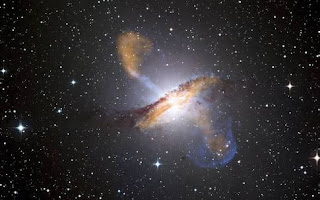1. Formation of galaxies.
The biggest mystery of this universe is its own formation. In other words, how the galaxies/universe or any of this is formed. Most of the scientists are sure that this whole universe came to the existence due to a big bang but still there are some other facts to deny this theory. So nobody is totally sure about how this universe came to be. Since the mystery about the existence of stars and planets was solved not too long ago, scientists are now looking at a bigger picture i.e, the mystery of the existence of galaxy.
2. White Holes.
Since the theory about the existence of black hole became right, scientists are now looking for the existence of white hole which was also proved by a theory alongside the black hole Theory. Totally opposite to black holes, white hole spits matter and energy instead of sucking it. As no one was able to find a white hole till this day, the existence of white holes is still a mystery.
3. UFOs.
UFO or Unidentified Flying Object are just like its name suggests is an unidentified object. There are many mesteries which revolves around a UFO. There have also been many UFO sightings. Many types of UFO are found till now, some have a cylinder like appearance, some seem to have round shape some are deformed. There are many conspiracies about a UFO, some people believe its a n experiment of the government other view them as an extraterrestrial spacecraft but its mystery is yet unsolved.
4. Multiverse.
Multiverse or multiple universes is also one of the biggest mysteries of the cosmos. We have witnessed many stars, many planets, many solar systems, many galaxies but could there be a possibility about the existence of multiple universes. We haven't witnessed any evidence to support this theory but none has been found to completely deny it. As the size of this cosmos is more than a human can grasp, the idea of witnessing multiverse feels like a fairy tale.
5. Dark Matter.
Existence of "Dark Matter" is certainly a possibility. As we have only discovered only about 4-5 percent of the matter in the universe, a question arises, where or what are the remaining matter? Well scientists believe it's in the form of "Dark matter". As per the scientist, anything and everything which we cannot touch, feel, hear and through which all the radioactive waves gets past is dark matter. As it cannot be witnessed by our current knowledge, it's definitely a big mystery.
The biggest mystery of this universe is its own formation. In other words, how the galaxies/universe or any of this is formed. Most of the scientists are sure that this whole universe came to the existence due to a big bang but still there are some other facts to deny this theory. So nobody is totally sure about how this universe came to be. Since the mystery about the existence of stars and planets was solved not too long ago, scientists are now looking at a bigger picture i.e, the mystery of the existence of galaxy.
2. White Holes.
Since the theory about the existence of black hole became right, scientists are now looking for the existence of white hole which was also proved by a theory alongside the black hole Theory. Totally opposite to black holes, white hole spits matter and energy instead of sucking it. As no one was able to find a white hole till this day, the existence of white holes is still a mystery.
3. UFOs.
UFO or Unidentified Flying Object are just like its name suggests is an unidentified object. There are many mesteries which revolves around a UFO. There have also been many UFO sightings. Many types of UFO are found till now, some have a cylinder like appearance, some seem to have round shape some are deformed. There are many conspiracies about a UFO, some people believe its a n experiment of the government other view them as an extraterrestrial spacecraft but its mystery is yet unsolved.
4. Multiverse.
Multiverse or multiple universes is also one of the biggest mysteries of the cosmos. We have witnessed many stars, many planets, many solar systems, many galaxies but could there be a possibility about the existence of multiple universes. We haven't witnessed any evidence to support this theory but none has been found to completely deny it. As the size of this cosmos is more than a human can grasp, the idea of witnessing multiverse feels like a fairy tale.
5. Dark Matter.
Existence of "Dark Matter" is certainly a possibility. As we have only discovered only about 4-5 percent of the matter in the universe, a question arises, where or what are the remaining matter? Well scientists believe it's in the form of "Dark matter". As per the scientist, anything and everything which we cannot touch, feel, hear and through which all the radioactive waves gets past is dark matter. As it cannot be witnessed by our current knowledge, it's definitely a big mystery.






Comments
Post a Comment